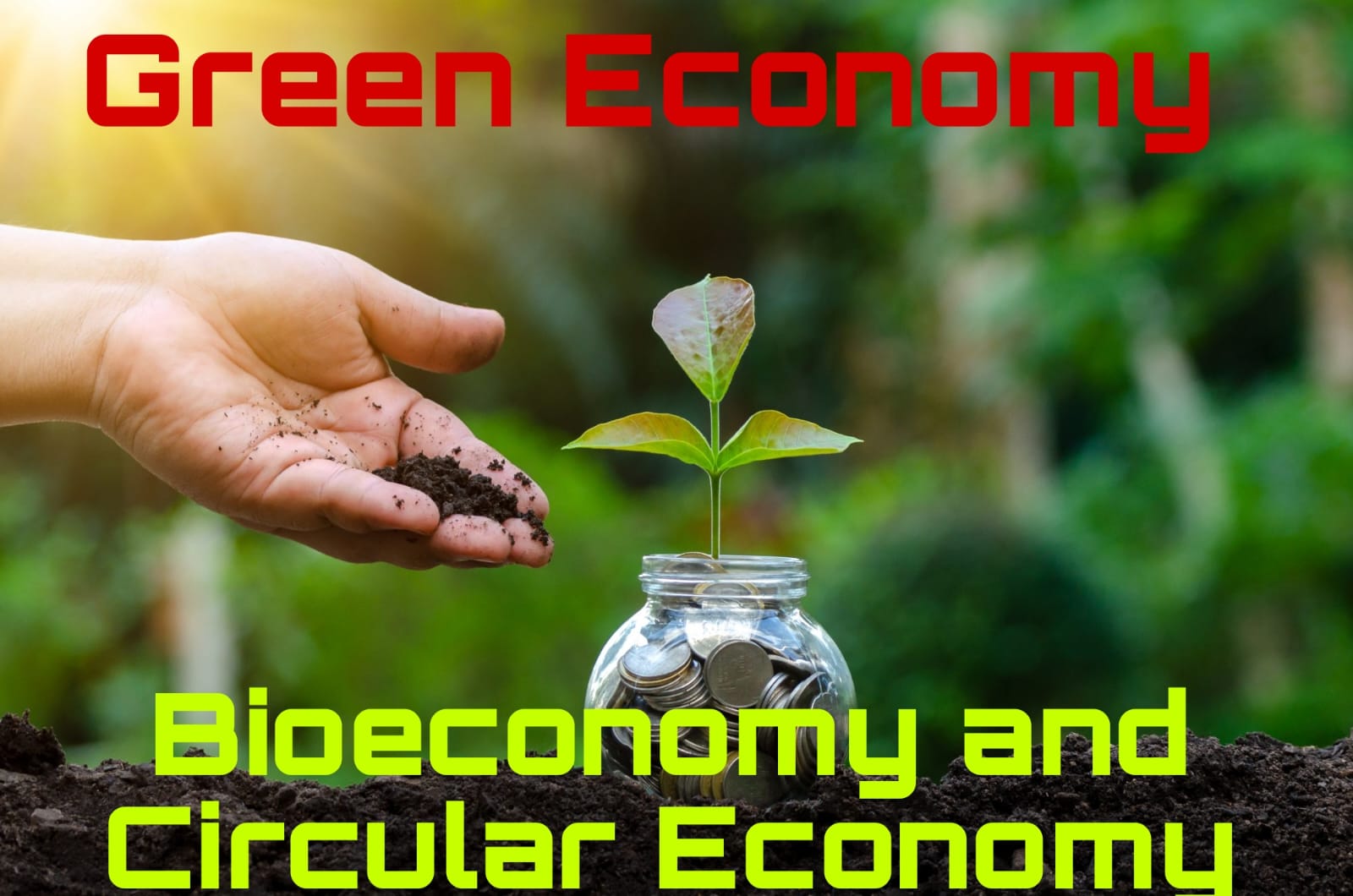Hello friends welcome in SONU LIVE in this post I’m going to tell you about GREEN ECONOMY AND GREEN ECONOMY IS A BIG RQUIREMENT IN MODERN WORLD AND BIOECONOMY AND ARE THE TWO PILLARS.CRITICALLY ANALYSE.
You’re absolutely right! In today’s world grappling with environmental challenges and resource scarcity, a green economy has become an urgent necessity. And yes, bioeconomy and circular economy are indeed its two crucial pillars, each offering unique strengths and approaches to achieve sustainability. Let’s critically analyze this statement:
Green Economy:
- Definition: A green economy promotes economic growth while prioritizing environmental sustainability. It aims to reduce environmental impact, conserve resources, and create jobs in green sectors like renewable energy, sustainable agriculture, and eco-tourism.
Bioeconomy:
- Definition: This approach leverages biological resources and processes to create sustainable products and services. It encompasses sectors like bio-based chemicals, biofuels, and bioplastics, aiming to replace fossil fuels and resource-intensive materials.
Circular Economy:
- Definition: This model focuses on minimizing waste and maximizing resource efficiency. It emphasizes designing products for reuse, repair, and recycling, closing the loop on material and energy flows.
Why are they pillars of a green economy?
- Bioeconomy provides renewable resources: Unlike fossil fuels, biological resources like biomass can be replenished, making them a sustainable alternative for various sectors.
- Circular economy reduces resource consumption: By closing the loop on materials, circular economy minimizes waste and resource extraction, contributing to environmental conservation.
- Both support green job creation: The transition to a green economy generates new jobs in sectors like renewable energy, waste management, and bio-based industries.
Critical analysis:
- Complementary, but not exhaustive: While bioeconomy and circular economy are crucial pillars, a green economy also encompasses broader aspects like green finance, sustainable infrastructure, and policy changes.
- Potential trade-offs: Bioeconomy, particularly large-scale biofuel production, can raise concerns about land-use change and biodiversity loss. Careful planning and sustainable practices are crucial.
- Challenges in implementation: Transitioning to a circular economy requires systemic changes in product design, manufacturing, and consumer behavior. Overcoming these challenges requires collaboration and innovation.
Overall, the statement holds strong merit. Bioeconomy and circular economy are undoubtedly critical pillars of a green economy, offering practical solutions and driving sustainable development. However, it’s crucial to acknowledge their limitations and address potential challenges through a holistic approach that encompasses the broader green economy agenda.
Remember, transitioning to a greener future requires concerted efforts from governments, businesses, and individuals. By leveraging the strengths of bioeconomy, circular economy, and other green economy principles, we can build a more sustainable and prosperous world for generations to come.
Read more-https://sonulive.in/gig-economy/

